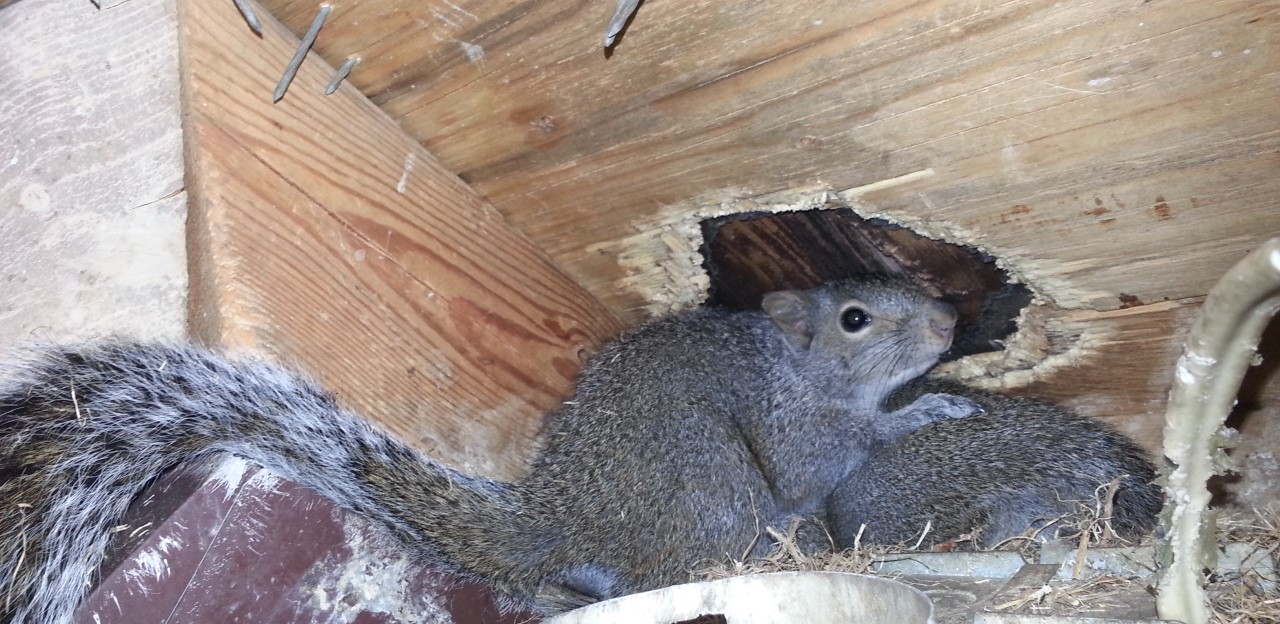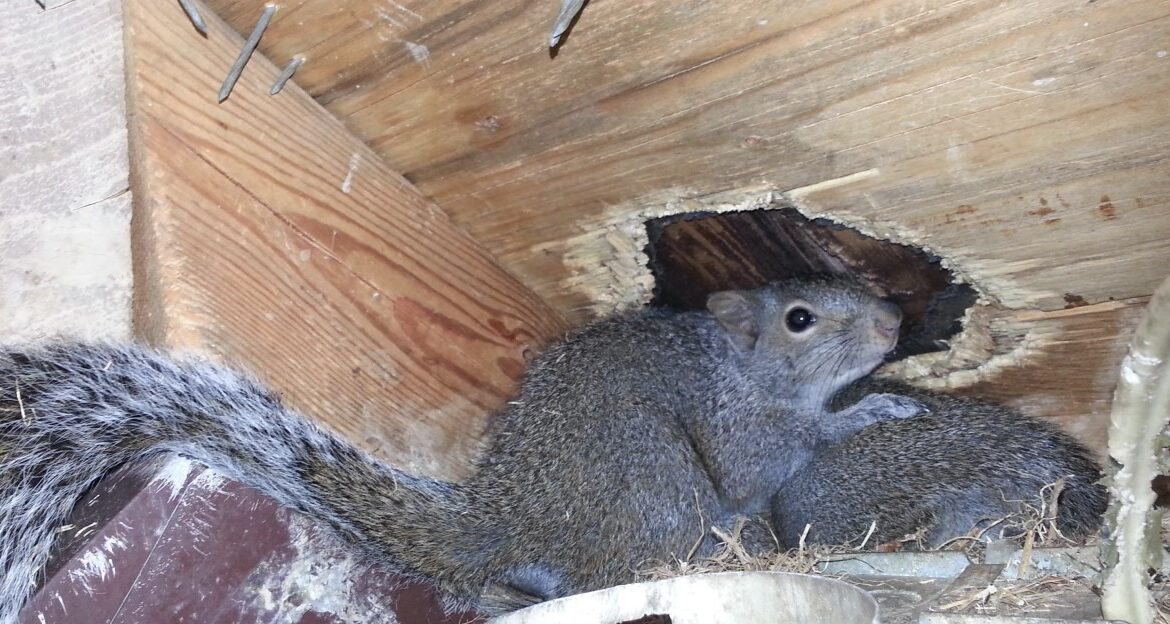Noticing strange noises in your attic or walls? It might be squirrels making themselves at home. These little animals can cause a lot of trouble, from chewing on wires and wood to leaving behind nests and waste. Fixing the mess they create is not just about appearance—it’s also about protecting your home from bigger issues down the road.
Repairing squirrel damage to your home means tackling chewed entry points, replacing damaged materials, and making sure your attic is clean and safe again. A proper wildlife home restoration ensures everything is secure and helps keep future pests out. Companies like Skedaddle Humane Wildlife Control in Bowmanville specialize in humane removal and repairs, guiding homeowners every step of the way.
If you’re wondering how to get started, we’ve got the steps and advice you need to make your space feel like home again.
Common Types of Damage Caused by Squirrels
Squirrels are determined when it comes to finding a place to nest. Unfortunately, this persistence can lead to widespread damage in houses. Below are the most common types of damage these little creatures leave behind and why you’ll want to address it quickly.
- Chewed Entry Points: Squirrels are excellent gnawers. They can chew through vents, fascia boards, and soffits to make their way inside your attic. These holes not only offer access for squirrels but can also invite other wildlife to move in. Sealing these entry points promptly is key to stopping the cycle of damage.
- Damaged Insulation: When squirrels nest, they often use your attic’s insulation. Insulation gets compressed or ripped apart as they build their cozy dens. Waste left behind in the insulation can contaminate it, making it ineffective for keeping your home energy-efficient. Replacing it ensures your attic works as it should while removing odours and health hazards.
- Chewed Electrical Wiring: Squirrels use their teeth to stay sharp, and unfortunately, your home’s electrical wiring is often a casualty. Chewed wires can lead to short circuits or, worse, a fire hazard. Repairing damaged wiring is not just about restoring functionality—it’s also about keeping your family safe.
- Structural Damage: Over time, squirrels can weaken the wooden areas in your attic. Rafters, beams, and even attic floors can suffer damage from persistent chewing or nesting. This kind of damage can compromise the stability of your house and should be repaired as soon as possible.
- Foul Odours and Contamination: Squirrel waste and nesting debris can leave strong smells in your attic. Beyond the stench, their droppings can also carry diseases and bacteria. Cleaning the area thoroughly not only improves air quality but also helps make your home a healthier place to live.
While the list of possible damage may seem overwhelming, fixing it one step at a time can make your home safe and secure again.
Steps to Repair Squirrel Damage in Your Home
Restoring your home after squirrels have taken over may seem like a big task, but when you break it down into small steps, it becomes manageable. From sealing entry points to improving insulation and fixing wiring, each repair gets you closer to making the space as good as new.
Sealing Entry Points
The first step to fixing damage caused by squirrels is stopping them from getting back in. You’ll want to locate every access point they used. They could’ve entered through holes in soffits, vents, or siding. Once you’ve identified cracks or openings, seal them using durable materials like metal flashing or strong mesh. These materials are tough enough that squirrels won’t be able to chew through them again. Installing one-way doors is another safe and humane option to make sure any remaining squirrels can exit but not re-enter.
Sealing the entry points sets the foundation for preventing future problems and keeps outside wildlife where it belongs.
Replacing Damaged Insulation
After the entry points are secure, turn your attention to the attic’s insulation. Old, torn, or soiled insulation needs to go. Removing and replacing it ensures your home stays energy-efficient. Not only does fresh insulation keep your home warm and cut heating costs, but it also eliminates bad odours left behind by waste. You can even look into pest-resistant options for extra protection—something we often recommend for homeowners dealing with repeat wildlife problems.
Once the new insulation is in place, you’ll feel the difference in comfort, and your attic will be a fresh and usable space again.
Fixing Chewed Wiring and Fire Hazards
Electrical wiring is one of the most important things to inspect after squirrels have been removed. You’ll need to look for exposed or damaged wires in the attic or walls. However, due to the fire risk this creates, avoid trying to handle this type of repair on your own. Licensed electricians are equipped to safely handle repairs, ensuring your home’s wiring is back in good shape.
For added safety, consider having protective coverings placed over vulnerable wires to keep them safe from future damage.
Restoring Structural Damage
If squirrels have been nesting in your attic for some time, they may have compromised its structure. Weakened beams, rafters, or floors should be assessed for stability. Damaged areas may need strengthening—or full replacement in some cases. Using strong, long-lasting materials ensures that your attic won’t suffer from further damage.
Restoring everything to its original condition gives your attic a fresh start and will put your mind at ease, knowing your house is solid again.
Cleaning and Decontaminating the Area
Cleaning is one of the final but crucial steps in repairing the damage. You’ll need to remove all nesting materials and droppings left behind. Nest debris can harbour parasites and bacteria. Afterward, disinfecting the space is vital to stop any possible spread of disease. You might also consider deodorizing to completely remove lingering odours and freshen up the affected areas.
Cleaning up the mess gives you a healthy and safe space and ensures there are no traces of the past invasion.
Preventing Squirrel Damage
Once the repairs are done, you’ll want to make sure this doesn’t happen again. Preventative measures go a long way in keeping wildlife outside where it belongs. Here’s what you can do to stay ahead of the problem.
- Trim Tree Branches: Squirrels often use overhanging branches to access roofs. Cutting tree limbs back to a safe distance can make it harder for them to get in.
- Strengthen Weak Areas: Cover vents, chimneys, or any weak points with sturdy materials like metal flashing or heavy mesh. This can block entry points and stop them from chewing their way in.
- Seal Food Sources: Garbage bins and bird feeders are attractive to wildlife. Keep trash tightly sealed and avoid keeping food sources close to the house.
- Inspect Regularly: Take a walk around your house every few months. Look for any new gaps or potential weak spots before they become access points.
- Ensure Attic Ventilation Is Secure: Properly securing attic ventilation can help you avoid entry without restricting airflow.
By making these small changes, you create a home that’s less appealing to wildlife and easier to protect.
We’ve Got You Covered
Squirrel infestations can leave your home in rough shape, with chewed wires, damaged insulation, and even structural issues. Fixing the damage isn’t just about making your home look better—it’s about keeping it safe and functional. Taking steps like sealing entry points, cleaning contaminated areas, and replacing damaged materials ensures a complete restoration. With the right approach, you can protect your home for years to come.
At Skedaddle Humane Wildlife Control in Bowmanville, we’re here to make the process easy and worry-free. Our team specializes in humane squirrel removal and top-notch repair work through wildlife home restoration. We use methods like one-way doors to safely remove squirrels, ensuring they don’t return. Plus, we help secure your home to prevent future infestations so you can enjoy peace of mind.
Don’t wait for the damage to get worse. Contact us today for expert squirrel damage repair and restoration services. Request a quote to learn more about how we can help restore your space and keep squirrels out for good!




